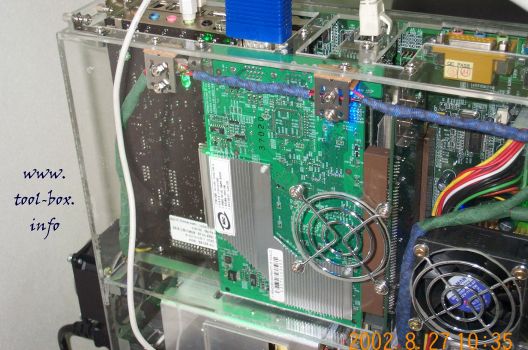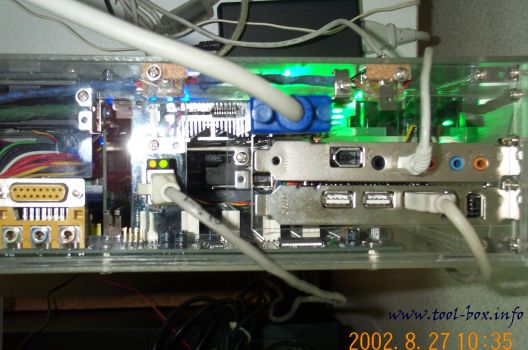The Heatpipe Mod on XPPort-II (1/11)
Posted by Wesley onThe single most annoying thing that bothered me in designing the series of Portable Athlons (First & Second) is that I could not use a full-height video card. This is because the system's internal dimensions limit all components to be less than or equal to around 8cm. Even a relatively shorter card (among full-height) such as a conventional GeForce3 Ti200 models are at least 9cm, and the higher performance cards like GeForce4 Ti series are 11cm in height. If I were to try using these cards, the top part would stick out of the case in an ugly manner. Meanwhile, a budget-sector cards like GeForce4 MX can come in a low-profile version, measuring around 7cm in height, which easily fits into the system.
Unfortunately, this meant I was to be kept in an infinite loop of budget-sector cards, since there is little chance that a video card manufacturer would make a high-performance model into low-profile version. This is due to the design constraints (high-performance cards need a lot more supporting components for proper operation) as well as the appearance factor (low-profile video cards tend to look cheap). This does not bode well when you're seeking ultimate performance out of your system. Also, there's already a mobile version of Radeon 9000 out, meaning that a notebook computer in the near future can beat my GF4MX-equipped system in game performance, while there is no low-profile version of Radeon 9000 to be found.
So I concluded that something dramatic had to be done. No, that didn't mean I'd throw out the Portable Athlon idea altogether and go back to the traditional case. I discovered that I was neglecting a fairly obvious design improvement - rotate the video card like I had already done with the PCI cards.

This might not look normal. In fact, it isn't; you don't see many video cards plugged in parallel to the mainboard. This had been achieved by using a tall AGP riser card which rotates the AGP port 90 degrees at a height of around 6cm. This way, I only sacrifice one possible PCI slot, which wasn't in use at the time anyway. The area where the PCI card could have been now has the video connector sticking out.

This is the way it is looking from the top. It does have a very unorthodox arrangement of cards. To the far left, you can see the AGP riser card sticking out and the video card connecting to it from the top area. To the right, there is a PCI riser card that provides connection to the SB Audigy card and the USB2.0/IEEE-1394 card. In the middle, the LAN card takes an unusual position in between. This is possible because it is very small and does not touch the video card's heatsink at all.
Finally, I was able to break free from the vicious loop of budget video cards. As some of you might have noticed, I have now plugged in a GeForce4 Ti4200 card from Leadtek as the video card. It's a WinFast A250LE Light model, which does not have the video-out plug or the DVI connector, of which I have no use for. Even the fastest card currently released, Radeon 9700, has almost identical dimensions, so my upgrade path has a bright future.